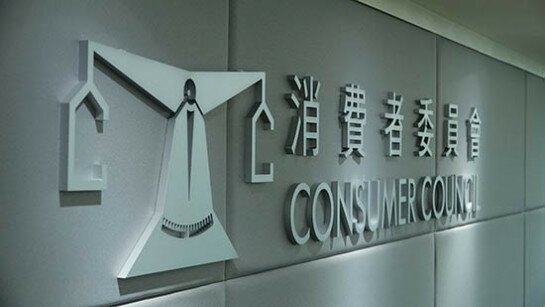Introduction
1. The Consumer Council (the Council) is pleased to submit its views concerning the Draft Guidelines released by the Competition Commission (the Commission) on 9 October 2014 for public consultation.
2. This submission sets out for the Commission's consideration issues arising from the three draft substantive Guidelines (the First and Second Conduct Rules and the Merger Rule).
Guideline on the First Conduct Rule
Meeting of minds
3. To decide whether there is an agreement, the Commission will seek to determine whether there is a "meeting of minds" (paragraph 2.13) between the parties, irrespective of their physical presence. The Council agrees to this in principle and encourages the Commission to apply rigorously the "meeting of minds" test when parties engage in creative means of communication to facilitate collusion. In case of a decision of an association, the Commission asserts that it is caught by the FCR even if the decision is not binding on the association's members (paragraph 2.22), provided that the decision reflects the association's objective intention to coordinate the conduct of the members (paragraph 2.23). In this case, the Council would seek the Commission's clarification as to when will a non-binding resolution voluntarily followed by its members be caught by the FCR. For instance, would it be deemed a "decision" of an association if most but not all of its members announce their pricing strategies to the media or over the Internet at roughly the same time, so that all members can receive the announced information through either the broadcasting network or over the Internet?
Serious Anti-competitive Conduct
4. Short of spelling out the words "hardcore cartel" to be condemned "per se", the Commission indicates that Serious Anti-competitive Conduct as defined in s2 of the Ordinance is considered to have the object of harming competition (paragraph 3.7). When the object test is satisfied, it dispenses with the effect test, and a contravention of the FCR is found.
5. As regards the general exclusion from the FCR in s1, Sch 1 of the Ordinance, the Commission interprets it as a "defence" that can be invoked by undertakings, who bear the onus of establishing overall economic efficiency by meeting all the cumulative conditions under s1, Sch 1 of the Ordinance (paragraph 4.3).
6. The Council supports the position that the Commission supplements in paragraph 4.4 that as a practical matter, Serious Anti-competitive Conduct is unlikely to be justifiable on that basis, even if the overall economic efficiency defence is arguably available to all types of agreements.
7. The Commission asserts in paragraph 5.7 that the category of Serious Anti-competitive Conduct is an "open" one, subject to meeting the definition in s2(1) of the Ordinance. In this connection, the Council would like the Commission to confirm if the Warning Notice procedure can be dispensed with for the "non-exhaustive" category of conduct that is deemed to fall within Serious Anti-competitive Conduct, in particular resale price maintenance.
8. The Council considers it sensible for the Commission to categorize resale price maintenance involving fixed or minimum resale prices as typically having the object of harming competition (paragraph 6.9), but to adopt a different approach, akin to the rule of reason, in assessing recommended or maximum prices (paragraph 6.65 - 6.70). But the Council would also seek the Commission's clarification whether a rebuttable presumption is applicable to the category of fixed or minimum resale prices. In the EU jurisprudence, fixed or minimum resale prices are presumed to be detrimental, subject to a rebuttable presumption that allows the undertakings to furnish evidence of efficiencies that outweigh the negative effects in individual cases.
Effect test
9. The Commission indicates in paragraph 3.14 of the Guideline that it will consider the degree of market power held by the undertakings in assessing the actual or likely anti-competitive effects of an agreement in a relevant market. It asserts in paragraph 3.16 that market power is a matter of degree, and that the degree of market power, for concerns to arise under the FCR, is less than that required for concerns to arise under the Second Conduct Rule.
10. The Council considers that market power as a criterion may have the drawback of shifting the deliberations to market definition. Undertakings without market power may enter into an anti-competitive agreement that targets a certain segment of the market. In such case, if the effect test is assessed on the targeted segment, the harm as measured directly by price may be appreciable. But if the effect test is assessed on the basis of market power, deliberations may be stuck on defining the relevant market.
11. The Council suggests the Commission to assess market power through alternative means other than searching through the analysis of relevant market. A direct measure of calculating the gross and net profit margins over a prolonged period can be an alternative of testing the market power.
Exchange of information
12. The Commission asserts that it will consider the exchange between competitors of information on intended prices or quantities as having the object of restricting competition (paragraph 6.35). The exchange of future price and quantity information is distinguished from other forms of information exchange involving historical, aggregated and anonymized data, because the latter is unlikely to reduce independent decision-making by undertakings with regard to their actions in the market (paragraph 6.41).
13. The Council is of the view that the exchange of prices between competitors is intrinsically anticompetitive, as it makes price or market strategies of otherwise competitors transparent and easy to monitor. The Council concurs to the Commission's view of treating exchange of price information as having the object of harming competition.
Public Information Exchanges
14. The Commission suggests in paragraph 6.43 that harmful effects are less likely to arise for information exchanged in public such that all parties have access to the information (including consumers). It adds that exchanges which take place in public are also more likely to generate efficiencies.
15. The Commission does not elaborate what type of efficiencies would be generated. It may refer to efficiency in reducing consumers' search costs that the Council advocates all the time. The Council suggests the Commission to specifically elaborate the type of efficiencies with examples on how public information exchanges could reduce consumers' search costs and how private price information exchanges could decrease consumer welfare.
Group boycotts
16. The Commission asserts in paragraph 6.45 that it will consider a group boycott as having the object of harming competition when, in particular, a group of competitors agrees to exclude an actual or potential competitor.
17. The Council notes that there are instances where retaliatory measures against deviating members may take the form of a group boycott, which is intended to facilitate a cartel agreement. However, it may not necessarily follow that all forms of group boycotts are with the intent to facilitate a cartel that is against consumer interests. There are grey areas where a member of an association is expelled from participation in the economic activities of the trade. There can be legitimate reasons such as assurance of quality or standard. The Council seeks the Commission's clarification and elaboration on whether member expulsion is categorically deemed to be a group boycott, hence considered as having the object of harming competition, notwithstanding the fact that the expulsion may in fact benefit consumers because it denies a 'rogue' trader from participating in the market and engaging in activities against consumer interests.
Consumers' entitlement to fair share of efficiencies
18. For the general exclusion for agreements enhancing overall economic efficiency to apply, one of the cumulative conditions was to allow consumers a fair share of the efficiencies. The Council notes the Commission's interpretation (paragraph 2.17 of the Annex to the Guideline) that a "fair share" must "at a minimum compensate them for the actual or likely harm to competition" and that "the overall impact for consumers must at least be neutral".
19. These phrases appear to provide the lowest threshold that consumers are not worse off. In theory and practice, the onus should be on the applicant to quantify the economic efficiencies, and to provide evidence on how much share goes to consumers. However, due to asymmetric information, some actual or likely harm to competition may not be known to the Commission. This will benefit the undertakings in the weighing exercise because some harm can escape compensation. As such, the overall consumer welfare may be worse off. The Council therefore urges that, to be fair, consumers should have a substantial share of the efficiencies. The Commission, in lack of industrial knowledge, should require the undertakings to submit objective and independent data with their applications. Unquantifiable efficiencies are unreliable at best.
Quantification of efficiency and benefit claims
20. Satisfying the criteria of enhancing overall economic efficiency such that consumers can enjoy a fair share of the benefits of efficiency in order to gain exemption is a common test set in competition laws in other comparable jurisdictions. Precedents have been set and there have been lessons learnt. It can be expected that local businesses will devote considerable resources to try and convince the Commission of how efficiencies will ensue from some forms of anticompetitive conduct.
21. When it comes to consumer benefits, it may not be concrete and expansive, apart from a theoretical potential for benefits to accrue. The Council argues at the very least that consumers are entitled to expect the Commission to
• make an assessment of the consumer benefits prior to granting an exemption;
• quantify any expected claimed benefits;
• provide a public record of that quantification; and
• indicate the consequences for exemption if the claimed benefits do not materialise.
22. In this connection, transparency and disclosure of all relevant information in the assessment process, for public input, is essential for consumers to have trust in the system. The Council acknowledges that requiring a high level of disclosure of information by business might deter undertakings from providing information in the first place. Notwithstanding that, commercially sensitive information can normally be satisfactorily redacted without compromising business interests.
Guideline on Second Conduct Rule
Abuse - exclusionary or exploitative
23. The Commission explains in paragraph 5 some non-exhaustive examples of abuse that violate the Second Conduct Rule (SCR). The examples are all exclusionary conducts - predatory pricing, tying and bundling; margin squeeze, refusals to deal and exclusive dealing. It is noteworthy that the wording of the SCR in s21(2) of the Ordinance prohibits abuse as "limiting production, markets, or technical development to the prejudice of consumers". This may refer only to exclusionary conduct, but not exploitative conduct such as exploitative pricing. The Council is concerned whether exploitative or excessive pricing which directly harm consumers without substantially restricting market competition will fall outside the scope of the SCR. As such, the Council seeks the Commission's express clarification whether consumers can expect the SCR to prohibit exploitative pricing which does not seem to have appreciable effect on competition.
24. In the context of the SCR, the Council notes that major jurisdictions adopts an increasingly effects-oriented approach in the assessment of exclusionary conduct. Intent evidence may be useful to the extent that it is confined to corroborating evidence as to the effect of a unilateral conduct, as a relevant but not standalone factor for finding liability. The US jurisprudence even shows that the evidence of intent is irrelevant in finding an abuse, as it is believed that the dream of monopoly is the motive that drives competition. The Council would like to clarify whether the Commission shares the US view.
25. The Commission expresses in paragraph 4.5 that the "object" of conduct refers to the objective purpose of the conduct, not merely the subjective intention of the undertaking concerned. If an "object" test plays any useful role in the analysis, the Council would like to understand which type of conduct will be viewed as satisfying the "object" test under the SCR, for instance whether pricing below a target firm's average cost can be treated as having such an "object". In fact, the Council is of the view that the focus should be put on the effect test in applying the SCR.
Guideline on the Merger Rule
26. The Merger Rule only applies to mergers involving, directly or indirectly, holders of carrier licences under the Telecommunications Ordinance. The Rule and Guideline therefore have limited application at this current stage. The Merger Rule has been applied in the past in the telecommunications sector with the assistance of the "Guidelines on Mergers and Acquisitions in Hong Kong Telecommunications Markets" issued on 3 May 2004 by the Office of the Telecommunications Authority. With the issuance of the current draft Guideline by the Commission, the Council has some comments to make.
Barriers to entry - structural
27. The Commission explains in paragraph 3.64 that access to essential facilities may pose a structural barrier to entry, where (1) access to it is indispensable in order to compete on the market; and (2) duplication of the facility is impossible or extremely difficult owing to physical, economic or legal constraints, or is highly undesirable for reasons of public policy.
28. The Council accepts that duplication of a facility can be highly undesirable for reasons of public policy. However, this should be resolved by political means, and is therefore not a matter for the Merger Rule. The Council suggests the Commission to delete the phrase related to public policy.
Preference for structural remedies
29. The Commission states in paragraph 5.12 - 5.14 of this Guideline that it has a preference for structural remedies over behavioural remedies in accepting commitments.
30. As behavioural remedies can easily be circumvented and are difficult to monitor, the Commission's preference for structural remedies is understandable. This preference also seems to accord with that of the Communications Authority. But the Council still feels that behavioural remedies can limit detriments to consumers when competitive forces do not emerge after market consolidation. In addition, the Council begs to differ on any perceived preference for structural remedies, given that reliance on structural remedies is not targeted against coordinated interaction post-merger. Indeed, the Council is concerned that coordinated interaction, as opposed to unilateral effects, cannot be effectively alleviated by structural or behavioural remedies post-merger. Short of blocking the merger, there is hardly any effective means of preempting the harmful effects.
31. As an example, the recent HKT-CSL merger has led to swift tariff increases by some operators including the newly formed "csl.". This calls into question whether the Communications Authority should have allowed the merger in the first place. The Council suggests that the Commission should seriously consider blocking mergers where there are reasonable concerns on post-merger coordinated interaction.
Conclusion
32. The Council supports the issuance of the draft Guidelines to provide general guidance on how the Commission will interpret and apply key provisions of the Ordinance, and appreciates if the Commission would take into account the Council's views stipulated above in finalizing the Guidelines.












